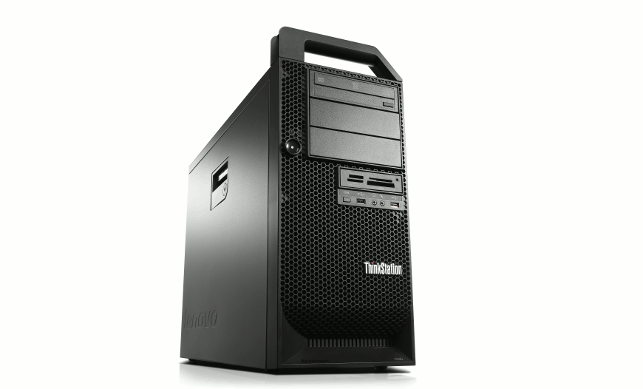When it comes to dual Xeons most manufacturers pack in the CPU cores when they send machines in for review. But while a pair of 10 or 12 core Ivy Bridge Xeons will slash ray trace render times, what if you’re into FEA or CFD and don’t want to spend the Earth?

Solving complex simulation problems doesn’t necessarily require so many cores and this is where lower spec chips like the Xeon E5-2637 v2 come into play.
With two of these 3.5GHz quad core chips inside Lenovo’s ThinkStation D30 there’s plenty to excite FEA and CFD users.
Doubling up on Xeon CPUs not only swells your cores; it significantly increases the memory bandwidth, which is important for simulation solvers.
These two Xeons have eight memory channels between them compared to a mainstream Core i7 system, which has two.
With 64GB RAM there’s plenty of capacity for complex problems and ECC support will correct errors should they occur. This could be particularly important for long runs as the last thing you want when a simulation has been going for days is for it to crash.
Moving large datasets into memory is well handled by a fast 256GB Samsung SSD. This is supplemented by a mainstream 2TB 7,200RPM HDD, though with three free 3.5-inch hard drives there’s plenty of scope to add more storage, including fast 10K and 15K drives.
With all fingers pointing towards simulation the Quadro K5000 GPU could be considered overkill, with the K4000 or K2000 being perfectly suitable (and cheaper) alternatives.
It all depends on workflow though and should you need some graphics oomph, it’s impossible to argue with the excellent scores in our SolidWorks and Creo tests.
The ThinkStation D30 is quiet, solid and well built, but it’s also exceedingly large. To our mind there’s little benefit over the ThinkStation C30, which can squeeze the same components into an amazingly compact chassis, but is limited to three hard drives and 256GB RAM.
To view comparative scores from other workstations please click here
For details of all our specific CAD/CAM/CAE benchmarks click here
Specifications
» 2 x Quad Core Intel Xeon E5-2637 v2 ‘Ivy Bridge’ (3.5GHz)
» 64GB (8 x 8GB) PC3-12800 1,600MHz DDR3 ECC RDIMM
» Nvidia Quadro K5000 (4GB GDDR5) (311.50 driver)
» 256GB SSD HDD + 2TB SATA HDD 7,200RPM
» Lenovo motherboard (Intel C600 Series Chipset)
» Microsoft Windows 7 Professional 64-bit
» 3 years base warranty (parts & labour onsite)
CPU benchmarks
(secs – smaller is better)
CAM (Delcam PowerMill 2010) – 1) 190 2) 211 3) 242
CAE (SolidWorks 2010 Simulation) – 95
Rendering (3ds Max Design 2011) – 138
Graphics benchmarks
(bigger is better)
CAD (SolidWorks 2013 – SPECapc graphics composite) – 6.11
CAD (Creo 2.0 – SPECapc graphics test) – 6.93
2 x Quad Core Intel Xeon E5-2637 v2 ‘Ivy Bridge’ (3.5GHz)
64GB (8 x 8GB) PC3-12800 1,600MHz DDR3 ECC RDIMM
Nvidia Quadro K5000 (4GB GDDR5) (311.50 driver)
Lenovo motherboard (Intel C600 Series Chipset)
256GB SSD HDD + 2TB SATA HDD 7,200RPM
3 years base warranty (parts & labour onsite)
N/A
190
211
242
95
138
N/A






